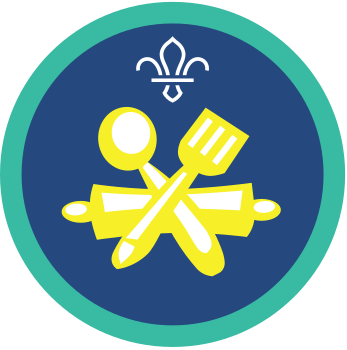Don’t be faced with food waste
You’ll need
- A4 paper
- Pens or pencils
- Scissors
- Access to a computer
Before you begin
- Have those who own smartphones bring them along for this activity, if they’re comfortable to, so that there are enough devices for each group. Check that there’s a stable internet connection in the area of your meeting place where you’ll run the activity.
- Print two copies of the ‘Food storage’ sheet. Cut out the foods from one of the sheets and put these to one side. Make signs for each of the food storage methods: ‘Kitchen counter,’ ‘Cupboard/pantry,’ ‘Fridge’ and ‘Freezer.’ Place these in different parts of the room. Keep the other copy of the ‘Food storage’ asset complete to check the solutions later.
Run the activity
- Explain to the group about food ‘use by’ and ‘best before’ dates. See if anyone knows what they mean. If not, explain what they’re for.
- Everyone should get into small groups. Give each group some of the cut-out foods from the ‘Food storage’ sheet, so that each group has an even number of them. Point out the food storage methods around the activity space.
- Explain that each group should take it in turns to take one food item and place it in the correct storage location. This is the place that the group thinks will be best to store that item of food, to keep it fresh, tasty and safe to eat. One person in each group should go at a time. Begin the game.
- When all of the foods have been placed with a storage method, the person leading the activity should consult the complete ‘Food storage’ sheet and read out the correct solutions. Read out the explanations given too.
- Now, give each group a copy of the ‘Shopping list and meal planner.' On the ‘Shopping list’ are a list of foods and their quantities, and when they need to be used by. On the ‘Meal planner,’ each group should plan out five evening meals for two people. They need to make sure that none of the food goes off before it can be used across the five days, even items they don’t use. At the same time, they should try and make sure each meal is healthy and balanced.
- Give everyone some time to finalise their menus on the ‘Meal planner.’ When everyone is done, collect up the menus and display them where everyone can see, if everyone’s comfortable with this. Everyone should come together and discuss what’s on the menus and compare ideas. Those who chose certain meals should try to explain why they chose what they did.
Reflection
A large part of being independent is being sure that you have enough food when you need it. To live healthily, we need to eat the right foods, so you have to strike a balance between using what’s available, selecting what you need to eat and doing so before it goes bad. Which of these is most important? Hard to source foods will probably be expensive, while eating out of date food could make you very ill. Prioritise having something fresh and wholesome ready to go for each meal, before thinking about it’s health benefits or cost.
Safety
All activities must be safely managed. You must complete a thorough risk assessment and take appropriate steps to reduce risk. Use the safety checklist to help you plan and risk assess your activity. Always get approval for the activity, and have suitable supervision and an InTouch process.
- Online safety
Supervise young people when they’re online and give them advice about staying safe. Take a look at our online safety or bullying guidance. The NSPCC offers more advice and guidance, too. If you want to know more about specific social networks and games, Childnet has information and safety tips for apps. You can also report anything that’s worried you online to the Child Exploitation and Online Protection Command. As always, if you’ve got concerns about a young person’s welfare, including their online experiences, follow the Yellow Card to make a report.
- Active games
The game area should be free of hazards. Explain the rules of the game clearly and have a clear way to communicate that the game must stop when needed. Take a look at our guidance on running active games safely.
- Scissors
Supervise young people appropriately when they’re using scissors. Store all sharp objects securely, out of the reach of young people.
After the food and storage matching game, challenge everyone by asking what they’d do with chilled or frozen foods on camp, where there are no fridges or freezers. When making meal plans, give tasty hints to those who struggle, and have master menu makers prepare breakfast and lunch plans too.
Make it accessible
All Scout activities should be inclusive and accessible.
Next time, think about having the groups cook one of their meals that they planned, to see how easy it is to prepare a healthy, balanced dish from a meal plan.


